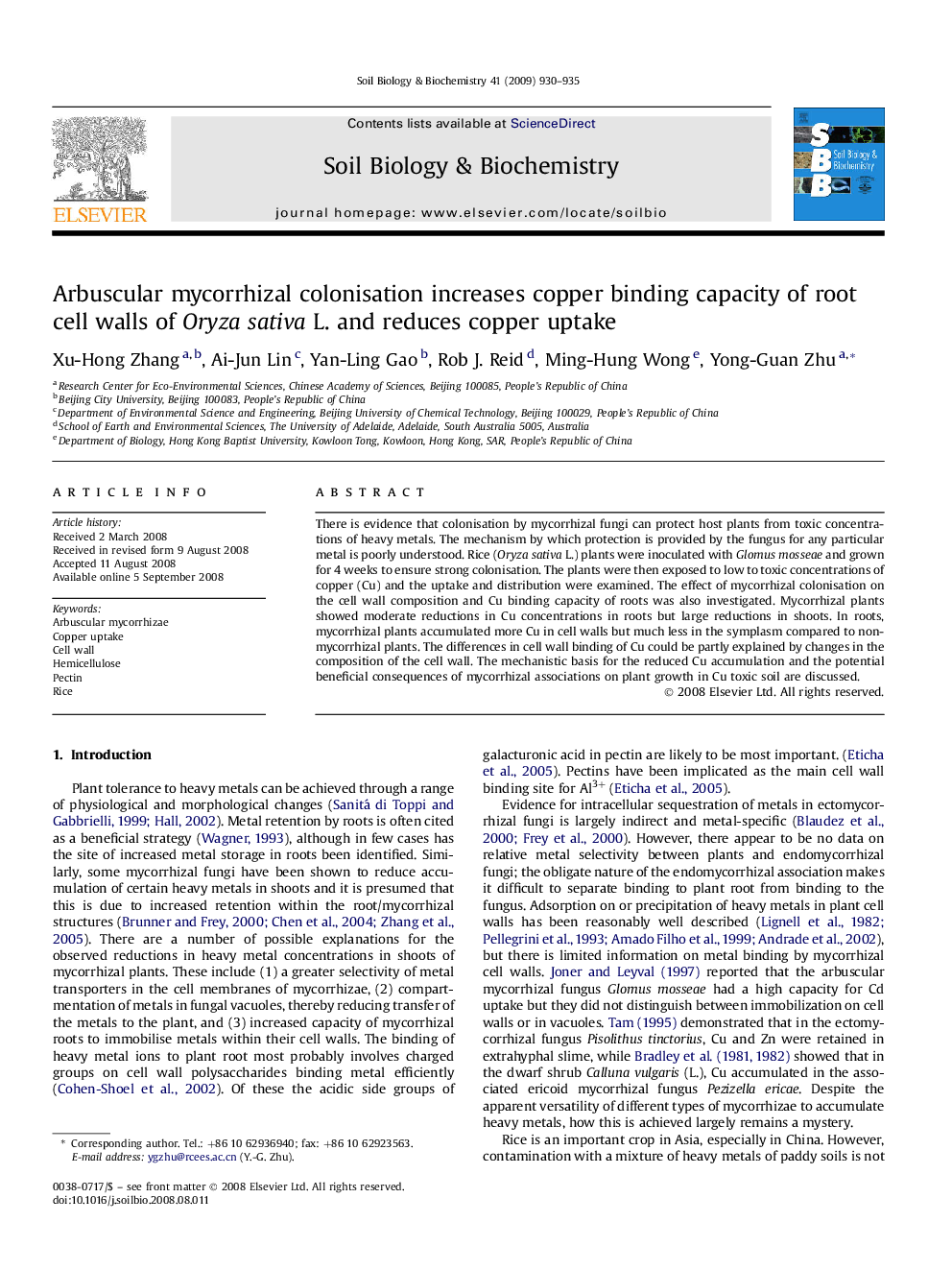| Article ID | Journal | Published Year | Pages | File Type |
|---|---|---|---|---|
| 2025756 | Soil Biology and Biochemistry | 2009 | 6 Pages |
There is evidence that colonisation by mycorrhizal fungi can protect host plants from toxic concentrations of heavy metals. The mechanism by which protection is provided by the fungus for any particular metal is poorly understood. Rice (Oryza sativa L.) plants were inoculated with Glomus mosseae and grown for 4 weeks to ensure strong colonisation. The plants were then exposed to low to toxic concentrations of copper (Cu) and the uptake and distribution were examined. The effect of mycorrhizal colonisation on the cell wall composition and Cu binding capacity of roots was also investigated. Mycorrhizal plants showed moderate reductions in Cu concentrations in roots but large reductions in shoots. In roots, mycorrhizal plants accumulated more Cu in cell walls but much less in the symplasm compared to non-mycorrhizal plants. The differences in cell wall binding of Cu could be partly explained by changes in the composition of the cell wall. The mechanistic basis for the reduced Cu accumulation and the potential beneficial consequences of mycorrhizal associations on plant growth in Cu toxic soil are discussed.
